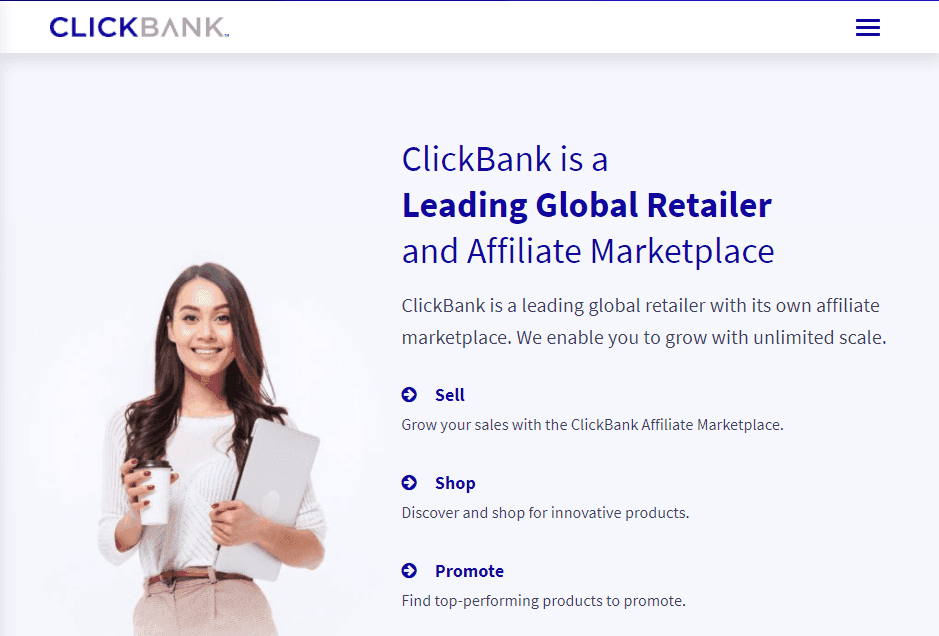Table of Contents
If you're reading this, you're probably well-versed in how affiliate marketing works. Brands work with influencers, publishers, or other content creators to promote their products or services. Those partners then earn a commission on each sale they make.
This basic model is at the heart of all affiliate marketing programs. However, the industry overall has evolved dramatically since it first started in the late '90s. Understanding those changes and the development of the affiliate system is key if you're a player in the field.
In this article, we'll walk you through a short history of affiliate marketing from its inception to today. Let's talk history!
A Brief History of Affiliate Marketing: How It Got Its Start
Affiliate Marketing Before the Internet
Referral marketing has been around for quite some time. Businesses have a long history of rewarding people who bring in new customers.
Long before digital waves transformed how we do business, affiliate marketing found its footing through simpler means like word-of-mouth endorsements and personal testimonies.
Take a step back to 1760, and you'd find British potter Josiah Wedgwood leveraging royal endorsements to boost his pottery's appeal, a precursor to today's influencer-driven promotions.
Fast forward to the 20th century, and the landscape shifted towards multi-level marketing (MLM), where products gained traction through sprawling networks of independent sellers.
Affiliate Marketing Goes Digital
However, online referral or affiliate marketing didn't get its start until the mid-1990s.
An online flower shop founded by William J. Tobin called PC Flowers and Gifts pioneered the first affiliate program for the web.
The e-commerce site went live in '89 and it launched its novel marketing approach soon after. By '93, the program was generating millions in sales per year. It had over 2,500 affiliates from all around the web by '95.
In '96, Tobin applied for a patent on affiliate marketing and tracking. He was granted the patent in 2000.
However, by then, PC Flowers and Gifts was far from the only player on the affiliate marketing field. Other businesses had seen its success and decided to adopt the method for their own use. One of those businesses happened to be Amazon.
The 2000s and the Impact of Amazon on Affiliate Marketing
As the digital landscape evolved in the 2000s, several key players and technologies emerged, significantly shaping the trajectory of affiliate marketing:
Google's Influence
Google AdWords, launched in 2000, introduced a new way for affiliates to promote products using PPC advertising.
This innovation allowed affiliates to drive targeted traffic to their sites or directly to merchant pages, earning commissions on resulting sales or clicks.
Google's algorithm updates throughout the decade also emphasized the importance of quality content, indirectly influencing affiliate marketing strategies to focus on value-driven content creation.
Amazon's Expansion
Amazon's famous affiliate program, Amazon Associates, first saw the light of day back in '96. Although it wasn't the first affiliate program, it was the first that was available to the public in general.
By signing up for Amazon Associates, members could publish custom banners that led back to Amazon or linked directly to it. These days, the program is an unstoppable juggernaut.
Amazon's vast product range and trusted brand made it a popular choice for affiliates, and its affiliate program became a model for many others.
The ease with which small businesses could integrate Amazon's affiliate links into their websites or blogs democratized affiliate marketing, making it a viable strategy for businesses of all sizes.
However, back in its early days, it looked very different, primarily due to two reasons:
- Amazon only sold books back then.
- In 1996, the company was only one year old and its initial public offering (IPO) was still a year off in its future.
Amazon's rise since then has been meteoric for over two decades. Arguably, part of that success can be attributed to Amazon Associates. The program still exists, of course, and its umbrella now covers much more than books:

These days, around 2.3 percent of all websites that use advertising networks are members of Amazon Affiliates. That's a massive number, which is only logical considering how many people trust Amazon with their purchases.
The advantage that big e-commerce players such as Amazon have when it comes to affiliate marketing is evident – people know them. That means, in theory, it's easier for affiliates to make sales since users are more likely to trust the products affiliates promote.
Thanks to Amazon Associates, the concept of public affiliate marketing programs took off faster than it might have otherwise. Unlike closed programs, these variants enabled anyone with a website to monetize their online presence.
Keep in mind that in the mid-90s, online advertising was also in its infancy. Text and banner ads were just starting to take off, right alongside the affiliate industry. Then came affiliate networks.
Mobile and Social Media Expansion (2010s)
The 2010s brought with them a mobile and social media revolution that profoundly impacted consumer behavior and, by extension, affiliate marketing strategies.
Smartphone Adoption
The introduction of the iPhone in 2007 and subsequent smartphones transformed internet access and consumption habits.
For small businesses, this meant ensuring their affiliate content was optimized for mobile devices to provide seamless user experiences.
Mobile optimization became critical for affiliate marketing campaigns, with companies like Shopify providing ecommerce platforms that were mobile-friendly, enabling small businesses to easily set up online stores that affiliates could link to.
Social Media Giants
Platforms like Instagram and Facebook became integral to daily life, influencing everything from consumer habits to communication.
Instagram, acquired by Facebook in 2012, became a powerhouse for influencer marketing. The platform's visually driven content was ideal for product promotion, and features like Stories and, later, Shoppable Posts, made it easier for affiliates to link directly to products.
For affiliate marketing, social media offered a new, more personal way to engage with audiences. Influencer marketing, an offshoot of affiliate marketing, gained traction as influencers with large followings began promoting products and services to their audiences.
This shift allowed small businesses to partner with influencers, leveraging their credibility and reach to promote their products in a more relatable and engaging manner.
YouTube's Role
Launched in 2005, YouTube became a significant platform for affiliate marketing in the 2010s.
Content creators like Philip DeFranco and Casey Neistat mastered the art of integrating product recommendations into their videos, offering a new format for affiliate marketing that was both engaging and persuasive.
Affiliate Software Innovations
The landscape of affiliate marketing software has significantly advanced, driven by the demands of an increasingly digital marketplace.
Companies like Impact Radius (established in 2008) and PartnerStack (launched in 2015) have been at the forefront, creating platforms that offer nuanced tools for managing affiliate programs, comprehensive tracking capabilities, and streamlined payout processes. These innovations are designed specifically to meet the dynamic requirements of today's digital environment.
In this evolving space, Easy Affiliate emerges as a standout solution, especially for small businesses and WordPress users.
Recognized for its user-friendly interface and seamless integration with WordPress, Easy Affiliate simplifies the complexities of running an affiliate program.
It allows small business owners to effortlessly set up, manage, and track their own affiliate programs directly from their WordPress dashboard, without the need for specialized technical knowledge.
What sets Easy Affiliate apart is its commitment to providing a comprehensive suite of tools within a single platform.
From real-time reporting and affiliate management to fraud prevention and integrated payment solutions, Easy Affiliate offers a robust system that caters to the nuanced needs of small businesses looking to leverage affiliate marketing. By minimizing the technical hurdles often associated with affiliate program management, Easy Affiliate enables small business owners to focus more on growth and less on administrative tasks.
Why Affiliate Marketing Networks Became Popular
The first affiliate marketing networks that launched to the public did so in 1998 and are still kicking around. If you're an affiliate marketer, you've probably heard about Commission Junction or Clickbank:

In the more than two decades that have passed since they first came on the scene, the concept of affiliate marketing networks hasn't changed all that much. Businesses often pay to become members and the network promotes their products to affiliates. Those content creators, in turn, promote the products to their audiences.
Affiliate marketing networks completely transformed the market. These platforms gave small businesses the opportunity to scale without the technical expertise needed to implement an affiliate system. Likewise, they provided affiliates with an opportunity to choose which products to promote.
Joining an affiliate network provided (and still does) businesses with the tracking and payment systems they needed to grow. As long as they have a product people want, affiliates can help them scale.
Today, affiliate marketing generates over 12 billion dollars globally each year. Affiliates drive over 16 percent of e-commerce sales around the globe, all thanks to the program that William J. Tobin launched over 20 years ago.
Conclusion
Affiliate marketing is a growing industry that shows no signs of stopping. Whether you run a small or big online business, launching an affiliate program is now easier than ever thanks to tools such as Easy Affiliate.
For affiliates, you have your pick of which programs or networks you want to join. If you have an audience and you know what types of products or services they're interested in, affiliate marketing is a profitable way to monetize your website or social media presence.
Do you have any questions about the history of affiliate marketing? Let's talk about them in the comments section below!
If you liked this post, be sure to follow us on Twitter, Facebook, and LinkedIn! And don't forget to subscribe in the box below.




Leave a Reply